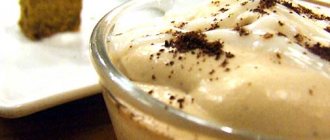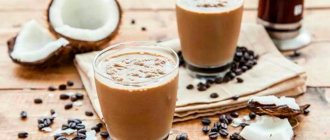How to master the art of making Turkish coffee
According to statistics, about 90% of the population of our planet loves this invigorating drink. And even those who are not included in this number or for some other reason do not use it, experience real delight from its aroma. A true coffee lover does not necessarily have to have expensive devices in his arsenal to prepare his favorite delicacy (for example, a coffee machine). Most of them master the art of how to brew Turkish coffee correctly so that it turns out delicious and its smell is able to make everyone in the household good morning. If you are sure that this is very easy to do, do not rush to conclusions. In fact, there are a lot of nuances that need to be taken into account in this matter, but once you familiarize yourself with them, you will really learn how to create a real masterpiece. This article talks about them.
How to choose a Turkish woman?
By the way, in Turkey it is called cezve. This device is of great importance when preparing an invigorating drink, so it will be useful to familiarize yourself with the recommendations from professionals regarding what it should be:
- You probably noticed that this dish has a cone shape, and this is not in vain. It should have a wide bottom and a narrow neck. This arrangement allows the coffee grounds to slowly move to the bottom without rising with the foam. The latter forms a kind of cork, thanks to which essential oils remain in the vessel, and it is they that give the drink the desired thickness and rich aroma. Thanks to the wide bottom, the device not only gains stability, but also ensures uniform heating of its contents;
- The art of brewing coffee in a Turk also requires choosing the right volume. It is logical to assume that the larger it is, the greater the amount of delicacy that can be prepared in it. But you should focus not only on this criterion. The fact is that the smaller it is, the more pronounced the taste and aroma of the drink will be. The optimal option is 100-150 ml, and even if you have to spend more time on cooking to treat a large company, the resulting pleasure will prove that you made the right choice. But, if you still want to save time on preparation, you can purchase a device with a much larger volume - up to 500-600 ml;
- Pay attention to the handle of the device. Firstly, it must be long. Secondly, it is desirable that it be placed at an angle for ease of use of the utensils and to eliminate the risk of burns from the stove fire. If you plan to prepare a drink on sand, the handle should be placed vertically. The material from which it is made is also important. Avoid the metal version - it gets very hot. A common choice is plastic or wood. The first one is more durable, but it can emit an unpleasant odor, while a wooden handle looks more comfortable and attractive and does not smell unpleasant;
- If you are often on the road and prefer to brew your favorite drink yourself, even without being at home, consider devices equipped with a removable handle. They are easy to transport, care for, and use.
This does not limit the list of tips on how to choose the right one, and therefore, subsequently, how to brew Turkish coffee correctly. The material from which it is made is also very important, and the most popular options are the following:
- Aluminum. The main and, according to many coffee lovers, its only advantage is its low price. The main disadvantage is that this material distorts the taste of the delicacy, which is far from ideal. However, if you are not part of the army of its most ardent fans, and this drink is not your favorite and most frequently consumed, you can use this option;
- Clay. This choice has an order of magnitude more advantages than the previous one. Don't be put off by the fact that you'll have to make coffee in a fragile clay pot - just be careful not to break it. But your kitchen will be decorated with a beautiful, unusual, original vessel that will bring comfort and a special atmosphere to it. In addition, the drink prepared in it will be tasty, since the pores of this material are capable of allowing oxygen to pass through, which saturates the contents of the device. They also have the property of absorbing essential oils from the product, so with each subsequent cooking the delicacy gains a more pronounced taste and aroma. But this same factor also contains another nuance of how to brew coffee in a clay pot. You will have to use only one variety of it so that the aromas and flavors of different varieties do not mix. However, many connoisseurs of this delicacy are fans of one of them, without changing their choice for years, so this moment does not upset them;
- Ceramic. It is also quite fragile. The disadvantages of the device include the fact that the material has the ability to heat up quite slowly and give off heat. In this regard, you will have to get used to using such utensils correctly in order to prevent the drink from running off even after the stove is turned off. But there is one big advantage in how to brew coffee in a ceramic pot, which will be appreciated by those who like to frequently pamper themselves with different varieties. It, unlike the clay version, does not absorb oil into its walls, so there is no risk of mixing tastes and aromas. The advantages of such a device include ease of maintenance and stylish design;
- Made from stainless steel. Gurus in this matter consider this material to be one of the best. In addition to the fact that it is durable and reliable, it is also not able to react with the prepared product, which ensures a clean, rich taste and aroma. Dishes made from it have a stylish look, which makes them also an excellent decorative element. But there is one nuance in how to brew Turkish coffee at home using this option. Stainless steel has low thermal conductivity, due to which the contents of the device may heat up unevenly. The product may burn at the bottom, acquiring a bitter taste. True, if you show skill and experience in using it, you will get an excellent drink;
- Copper. This is a classic utensil that has been used to prepare delicious delicacies since the very time they began to be consumed. Of all the options listed, no other has the properties that copper has to make the drink ideal. Its connoisseurs claim that by choosing it, you will make the right choice. Copper has the ability to conduct heat well, due to which the liquid warms up evenly and in the optimal amount of time. The delicacy acquires a pure, rich taste and aroma. But one very important point must be taken into account - copper can be unsafe for human health. Therefore, the dishes must be coated with food-grade tin, and if it is damaged, you must purchase a new device, refusing to use one that is already damaged.
Choosing a vessel is an important point in the question of how to brew coffee in a Turk correctly and tasty, but there is no universal advice regarding it. Which option to choose, everyone decides for themselves, taking into account their requirements, preferences, and financial capabilities. You can also focus on how often you drink the drink and whether you like to enjoy it regularly in a large company.
Types of coffee drinks
What is espresso?
The basis of all coffee drinks is a drink called espresso. Espresso is prepared by flowing hot water under pressure (about 90°) through a filter with ground coffee. This is why it is called “espresso”, which means “squeezed” in Italian.
All coffee drinks are based on espresso and by adding milk, cream, ice cream, chocolate, whiskey or even lemon juice we get various delicious coffee drinks.
How to choose Turkish coffee?
Its connoisseurs prefer to purchase the product in beans, grinding them immediately before cooking. This approach allows you to preserve the fresh, rich aroma and pronounced taste of the drink. If you buy it in ground form, the smell quickly disappears. In addition, it has the ability to absorb third-party odors. In this regard, it should be stored in a hermetically sealed container.
The right variety
There are two main varieties of beans - Arabica and Robusta, and the first is the more preferable option for cooking in a cezve.
It can be determined by the following characteristics:
- The grains are oval in shape, while Robusta is closer to round;
- Arabica beans are slightly larger;
- Pay attention to the stripe running down the middle. In Robusta it is smooth, while in Arabica it is curved, reminiscent of the letter “S”, but with less pronounced bends.
As for Robusta, it rarely becomes the choice of real coffee lovers for several reasons:
- It is bitter, and this property is enhanced if you cook it in a cezve;
- This method of cooking contributes to the richness of the aroma of the product, and in Robusta it is characterized by earthiness and roughness;
- It contains more caffeine than Arabica, so the strength of the drink prepared in a cezve becomes even higher. While this may appeal to those looking for a pick-me-up, people concerned about cardiovascular health are unlikely to see this feature as a benefit to the product.
At the same time, Arabica is a name that combines a lot of varieties, from which everyone will choose the right one for themselves, focusing on their taste preferences. There is no need to buy the most expensive products. It is important to find an option that has a mild taste and pleasant smell. By the way, the composition may contain a small percentage of robusta - many producers and consumers believe that in this case it will not spoil the quality, but will only give the drink strength and a slightly more pronounced taste.
How to prepare the grains?
Usually we purchase a ready-to-use product that just needs to be ground. The manufacturer prepares it for us, and the consumer should choose it correctly. Here are the main points to pay attention to when choosing:
- The grains must have the same size, shape, color;
- They should not be chipped or have cracks. Whole, choice beans are a good choice;
- Their color can be any, and it depends on the degree of roasting, but it is important that it is the same, uniform;
- To make delicious Turkish coffee, how to brew it correctly also depends on how correctly it is roasted. The degree of roasting should be no more than medium, otherwise it will be bitter and have a burnt smell;
- The aroma of the grains should be pleasant, there should be no hint of rancidity or spoilage in it. If the latter are present, we can conclude that the product is expired or was stored incorrectly.
Grinding Turkish coffee
Regarding this point related to brewing the drink, the following recommendations should be taken into account:
- It is recommended to grind immediately before cooking the delicacy. Coffee beans contain voids that are filled with essential oils. When the first ones are crushed, they give off a pronounced aroma, which evaporates very quickly. This explains why any true fan of this product has a coffee grinder, which he uses before brewing coffee in a Turk on the stove;
- If you purchased already ground beans, store them in a glass container with a hermetically sealed lid to prevent the smell from dissipating for as long as possible;
- Even such dishes will not allow the aroma to persist for a long time - maximum 2-3 weeks. Therefore, when buying ground beans, you should not stock up on them for months in advance. Buy small quantities;
- When grinding beans, it is important that all grains are the same size, which will allow them to evenly impart aroma and taste to the drink. When producing it yourself, you can use a sifting sieve, through which you can calibrate particles of equal size. Those that do not pass through the sieve can be re-grinded to give them the desired size.
Grinding degree and dosage
We can say that this is a matter of taste, but it is important to consider that the smaller the grains, the more rich and aromatic the deliciousness will be. With coarse grinding, the delicacy will not be as tasty and fragrant. Therefore, fine grinding is the best option.
Coffee brewing gurus often grind the beans into dust. The consistency of this powder resembles flour. But preparing a drink from such a product is quite difficult, so this is a task for professionals. The fact is that with super-fine grinding, a kind of suspension is formed during cooking, which can fall into the cup along with the liquid. If you decide to try this option and it still appears, let the drink sit for it to settle.
As for the dosage, in the process of brewing coffee in a Turk on gas, the following proportions are usually used - 1 part of the product and 10 parts of water. But this is also a matter of taste, so everyone finds the ideal proportions for themselves. Accordingly, those who like the delicacy stronger increase the amount of ground grains, and those who like it weaker reduce it or use more liquid.
Water for coffee
It should not come from the tap, because it is not cleaned, it contains many impurities, including chlorine. A home filter or ozonizer will help eliminate this problem. In their absence, you can pre-boil it and then let it settle. But even in this case, it will not be possible to completely remove impurities that spoil the taste and aroma. Good options include water from a well, spring, or bottled liquid.
It is necessary to take into account such a property of coffee beans as their saturation with acids. In this regard, when brewing them in water with a high level of alkali, the taste and aroma of the drink will be muted. The optimal acidity level of the liquid is pH 6.5-7.5.
You should also pay attention to the degree of softness of the water. It should not be too soft or too hard. The permissible range of its mineralization is 75-250 mg/l.
Coffee bean processing
Roasting coffee beans
Processing plants purchase bulk quantities of green beans to carry out the roasting themselves. The product is first purified, sorted and sorted. Next, frying is carried out - today, devices are increasingly being used that allow it to be carried out without air access, under special conditions. Also applicable are open devices where contact with air occurs during the heat treatment process.
Interesting: How did the sound of the ancient Egyptian language come to be known?
The degree of roasting can vary, then the grain, which has acquired an appetizing brownish color, is crushed. Industrial mills allow you to obtain different grinding options; to create an instant drink, you need not the smallest – medium.
Classic Turkish coffee recipe
It came to us from where this drink has always been valued and is still valued today, and where they know how to prepare it most deliciously. In other words, this is a recipe for how to brew Turkish coffee in a Turk, and it is done in this way:
- Pour the required amount of product into the cezve. If you like to drink this drink with sugar, immediately add it to the bowl;
- Pour water into these ingredients - half of the volume you will use;
- Give the ingredients a little time to stop bubbling, then add the remaining water. Please note that it should be at room temperature or cold. If you want to make coffee in a Turk with milk and/or honey and other additions, now is the time to add them too. Please note that the total amount of ingredients should be such that the mass is not located above the neck at the point where it narrows, and during heating the composition does not overflow over the edges of the dish;
- Place the cezve on the stove, starting to prepare the drink on low gas. Ideally, it should be held slightly above the burner by the handle. But if you don’t have time for this, just leave it on the stove over low heat;
- After 1 minute of heating, stir the ingredients thoroughly but gently to prevent lumps from forming. There is no need to do this further during the cooking process;
- Do not allow the contents of the cezve to boil, otherwise you will ruin the drink. When the foam begins to rise, it (entirely, including the grounds) must be poured into a cup, which must be preheated;
- Let the drink brew for 2-3 minutes until it is ready and the grounds sink to the bottom;
- Now the delicacy prepared on your gas stove can be carefully poured into mugs, trying to prevent sediment from getting into them.
This is the basic method, but there are a number of other tips that you can consider when using it:
- In the recipe for how to brew Turkish coffee, the proportions of ingredients can be kept to the classic ones (1 part ground beans / 10 parts water), but it is not forbidden to change them at your discretion in order to regulate its strength;
- To maximize the taste and aroma of the product, add a little table salt to the drink, but it should not be iodized. You will not feel its taste;
- To obtain a similar result, the powder can be warmed up a little after placing it in the cezve. But don't overdo it - don't let it burn. You should not use this method if you are using a super finely ground product;
- When preparing real Turkish coffee, make sure that the foam does not escape, otherwise along with it it will lose some of its taste and smell;
- Stir the bulk ingredients used for cooking well before pouring the liquid over them. In this case, liquid components with a high level of viscosity (for example, honey, syrups) should first be diluted with water;
- The drink should be served with a glass of water - cool or at room temperature. This is not needed to dilute the hot deliciousness. The fact is that water helps cleanse your taste buds, so you can fully experience the taste and aroma of the drink.
Modern devices make a person’s life much easier, so many coffee lovers are familiar with how to brew coffee in a geyser pot, which is a coffee maker in its design, and it’s done like this:
- Fill the lower compartment with water;
- Secure the filter by pouring the required amount of ground beans into it;
- Screw both sections;
- Place the coffee maker on the stove, turning the heat to medium;
- When it starts making sounds similar to puffing, the drink is ready;
- Place it on a towel and let it cool slightly;
- Pour the contents of the device into mugs.
Iced latte recipe
Do you like not only invigorating, but also refreshing latte? Great news - you can make it at home too!
Step 1:
Pour syrup, espresso, milk and a large handful of ice into a shaker or container with a lid. Shake vigorously.
Step 2:
fill a glass with ice and then pour your creation on top.
Photo publicdomainpictures.net
Viennese coffee
The history of this recipe began several centuries ago, when Vienna was liberated from Turkish troops, in which a certain Yuri Franz Kulchitsky took part. For this, the city authorities awarded him several hundred bags (about 300) of coffee beans. It was a trophy taken from the defeated invaders. Kulchitsky's attempts to sell the drink on the streets of the city were not crowned with success, since its bitter taste was not appreciated by his fellow citizens. Then he had to come up with new ways to serve it, and so, experimentally, he came up with a recipe that included adding milk and sugar.
Modernity has brought its own adjustments to it, and today Viennese coffee is a classic way of brewing Turkish coffee with milk, sugar and cream. It is the last ingredient that distinguishes this recipe from the popular Turkish version. In addition to these ingredients, you can add chocolate, cinnamon, orange zest, nutmeg, etc. to taste.
It is prepared like this:
- Whip cream in an amount of 20-30 ml;
- Use the classic recipe for brewing coffee in a Turk on a gas stove, preparing about 50-60 ml of the drink. Do not forget that if you want to make it sweet, you need to add sugar immediately during cooking;
- Pour the cream into it so that it forms a layer on its surface and does not sink into the liquid. To do this, add this ingredient along the blade of a knife;
- If you wish, you can diversify the taste with other additions (orange zest, nutmeg, grated chocolate, etc.).
You can prepare the drink itself in a ceramic, copper pot, or a device made of any other material.
Be your own barista: how to make cappuccino and latte at home
Cappuccino or latte - what's the difference?
The ingredients for making these Italian drinks are the same. Espresso, milk and whipped foam are the main ingredients of lattes and cappuccinos. Their main difference is not in appearance, as many might think, but in the ratio of ingredients and the method of mixing them. Cappuccino is considered a stronger version of milk coffee - it consists of 1/3 Americano, 1/3 milk and 1/3 milk foam. In a latte, less strong coffee is added (about 1/4), and the remaining 3/4 is milk and foam.
How to make coffee?
For cappuccinos and lattes, choose quality mocha or espresso varieties. It is best to buy coffee beans, grind it at home in a coffee grinder and brew it in a Turk, but you can also buy ready-ground coffee. You don’t need to keep it on the stove for long – just bring the coffee to a boil. By the way, the correct ratio of coffee to water is 1/9 (for 20 g of coffee 180 ml of water). In parallel with the coffee, start preparing the milk froth so that both are ready at the same time.
How to make foam using a French press
1. Heat the milk in a way convenient for you: in the microwave or on the stove. Then pour it into a French press. 2. Close the French press. Now lower and raise the plunger for 15 seconds, slightly reducing the range of motion, until the milk froths. 3. Finally, gently shake the liquid in a circular motion.
How to make foam using an immersion blender
1. Heat the milk on the stove or in the microwave and pour into a blender container. 2. Beat the milk with a blender at low speed - this will take you about one minute. By the way, to get a higher foam, keep the blender almost on the surface so that as much air as possible gets into the milk.
How to make foam using a frother
1. Heat the milk in a way convenient for you. 2. Pour milk into a deep glass and lower the frother whisk to the bottom. Turn it on and, holding the glass tightly, whisk the milk for about 20 seconds. Then gently lift the whisk, continuing to work with it, whisking the top layers of liquid. Be careful: the higher you go, the more likely you are to splash milk all over the kitchen (which is why we recommend getting the tallest glass possible).
How to mix coffee and milk with foam
If you are making cappuccino, first fill the cup 1/3 full with coffee, then gradually pour in the milk and, if necessary, spoon in the remaining foam. Lattes need to be prepared differently. Take a high heat-resistant glass. First pour milk into it to fill 1/3 of the container, then the same portion of coffee, and place milk foam on top with a spoon. Ice cubes are useful for making an iced latte. Before mixing the remaining ingredients, place 5-7 cubes in the bottom of the glass.
How to decorate cappuccino and latte
It is very easy to decorate milk foam on cappuccinos and lattes, adding additional flavor to the drink. For example, you can sprinkle with chocolate or nut crumbs, cocoa or cinnamon. And at the end, using a toothpick, draw a heart or another design of your choice on the foam.
1. Heat the milk on the stove or in the microwave and pour into a blender container. 2. Beat the milk with a blender at low speed - this will take you about one minute. By the way, to get a higher foam, keep the blender almost on the surface so that as much air as possible gets into the milk.
Oriental coffee
When preparing it, you can use any additives - from sweet (vanillin, chocolate, sugar, honey) to spices (black pepper, cardamom, cinnamon and any others to your taste). It is prepared like this:
- Combine ground coffee beans with sugar in a cezve, stir the components, the proportions of which you should determine yourself;
- Fill them with water, place them on the gas stove, turning the heat to minimum;
- When the foam begins to rise, according to the Eastern recipe, you need to temporarily remove the dishes from the stove, remove the first one and place it in a preheated cup;
- When the foam goes down, return the cezve to the stove, then remove the foam 2-3 more times;
- At the end of cooking, add spices to your taste, but be guided by the fact that their bouquet should not interrupt the taste and aroma of the drink, but is intended only to emphasize and enhance them. Therefore, you need to add spices in minute quantities;
- Pour the contents of the dish into a foamy cup. You can serve it with cream, chocolate, oriental sweets, etc.
Today you can use many different electrical appliances to prepare this drink, but the cezve remains the most convenient for this process, and neither the year nor the achievement of technical progress has power over this fact.
Coffee extraction and solids separation
Extractor
Ground coffee is immersed in extraction batteries, which brew an invigorating drink in industrial quantities. In fact, the extraction process is not much different from ordinary boiling, and the batteries themselves also resemble a huge coffee maker - only with increased pressure and constant flows of boiling water. The water circulates, washing out all the necessary substances from the ground coffee particles, the resulting result is usually called an extract. It is freed from suspensions, the ground particles are completely removed after boiling.
Many tanks of freshly brewed coffee are sent for evaporation - it is necessary to rid the extract of excess moisture. Then comes the turn of the next procedure, after which the soluble granules can be considered almost ready. It is carried out using two different methods; each plant follows its own approach, focusing on the available equipment.
Production
Drying and peeling of fruits
To begin with, the coffee beans are harvested, a process still done by hand. The fruit is then dried and peeled using one of two methods.
The dry method is a more ancient, primitive and labor-intensive process. The fruits are laid out in the sun and raked and spread out again several times during the day. When they dry out to the point that they contain only 12 percent water, the pavers become wrinkled. At this stage they are processed manually or by machine.
When using the wet method, the husks are removed before drying. The fruits are first processed in a pulping machine, which removes most of the material surrounding the beans, but some of this glue coating remains after the pulp is cooked. This residue is removed by adding enzymes in tanks where their natural enzymes digest the sticky substance over a period of 18 to 36 hours.
Once removed from the fermenting tank, the beans are washed, dried with hot air and placed in large mechanical mixers called hullers. Huller will polish the beans to a clean, glossy finish.
Cleaning and sorting beans
The beans are then placed on a conveyor belt, which carries them past workers who remove sticks and other debris. They are then graded based on the size, location and height of the plantation where they were grown.
Once these processes are complete, workers select and package specific types and grades of beans to fill orders from the various roasting companies that will complete the bean preparation. When beans (usually robusta) are harvested in undesirable conditions—hot, humid countries or coastal areas—they should be shipped as quickly as possible, as such climates are conducive to insects and fungi that can seriously damage the cargo.
When the coffee beans arrive for roasting, they are again cleaned and sorted using mechanical devices to remove leaves, bark and other remaining debris. If the beans are not supposed to be defatted, they are ready to be roasted.
Decaffeination
If coffee can be defatted, this is done using two methods. The first is using a solvent, the second is called aqueous.
In the first process, coffee beans are treated with a solvent (usually methylene chloride) that leach out the caffeine. If this degreasing method is used, the beans must be thoroughly washed to remove any traces of solvent before roasting.
The water method involves steaming the beans to bring the caffeine to the surface and then scraping off that caffeine-rich layer.
Burning
The beans are roasted in huge commercial roasters according to procedures and specifications that vary between manufacturers (specialty shops typically buy the beans directly from the growers and roast them on site). The most common process involves placing the bean in a large metal cylinder and blowing hot air into it. An older method called staggering requires placing the beans in a metal cylinder, which is then rotated over an electric, gas or coal heater.
Regardless of the method used, roasting gradually raises the temperature of the beans to 220-230 degrees Celsius. This causes the release of steam, carbon monoxide, carbon dioxide and other volatiles, reducing the weight of the beans by 14 to 23 percent. The pressure of these escaping internal gases causes the beans to swell, increasing their volume by 30 to 100 percent. Roasting also darkens the color of the beans, gives them a crumbly texture, and causes chemical reactions that imbue the coffee with its familiar aroma (that it has not yet possessed).
After roasting, they are placed in a cooling vessel in which they are mixed while cold air blows on them. If the brewed coffee is of high quality, the cooled beans will now be sent through an electronic sorter equipped to detect and eliminate beans that come out of the roasting process too light or too dark.
If the coffee is pre-prepared, the manufacturer injects it immediately after roasting. Special grinding types have been developed for each of the different types of coffee makers, as each is best suited for coffee of a certain fineness.
Instant coffee
If coffee must be instant, then it is brewed using water in huge percolators. The extract is purified from the brewed coffee and sprayed into a large cylinder. As it falls down through this cylinder, it enters a warm air stream that turns it into a dry powder.
Package
Whole coffee beans are less susceptible to loss of aroma and flavor than other types of coffee and are usually packaged in foil bags.
Pre-ground coffee should be hermetically sealed, as it retains its basic qualities less well. It is usually packaged in impermeable plastic film, aluminum foil or cans.
Instant coffee easily absorbs moisture, so it is vacuum packed in tins or glass jars before shipping to retail stores











